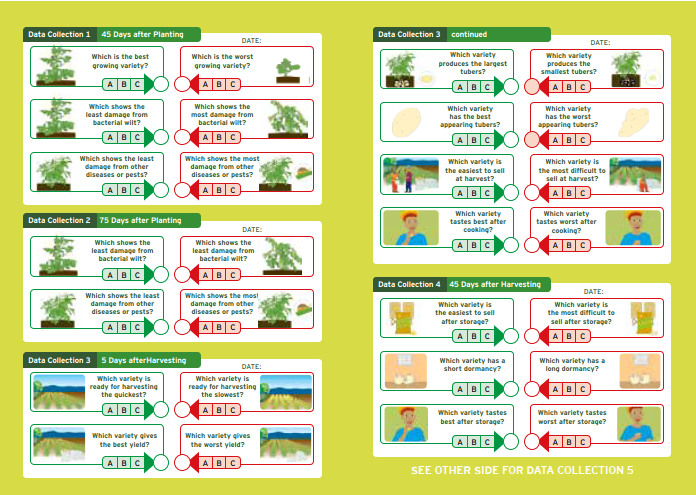Resources and Budgeting
Costing a tricot trial
A costing tool has been developed to help users plan the budget of implementing a tricot trial for a specific crop. It ensures cost transparency and consistency across projects, allowing for cross-country comparisons. It also helps in distributing resources, identifying high-cost centers, and noting unnecessary additional expenses. Breeding programs will employ the tool for calculating the cost of implementing tricot trials for specific crops, thereby providing estimates that enhance the planning and efficiency of future tricot trials.
The costing tool (guidelines and templates) are found in the appendix of this document (add link).
Which visual materials are needed?
At ClimMob (www.climmob.net) you will find examples and illustrations to help you generate your own visual materials. In order to explain the process to your tricot farmers and to facilitate the data collection, the following materials can support you:
• Informative leaflet or poster, as an aid to explain the tricot process to the farmers.
• Observation card, for the farmers to collect their observations on the field. It is designed to enable participation with a minimal level of literacy.
